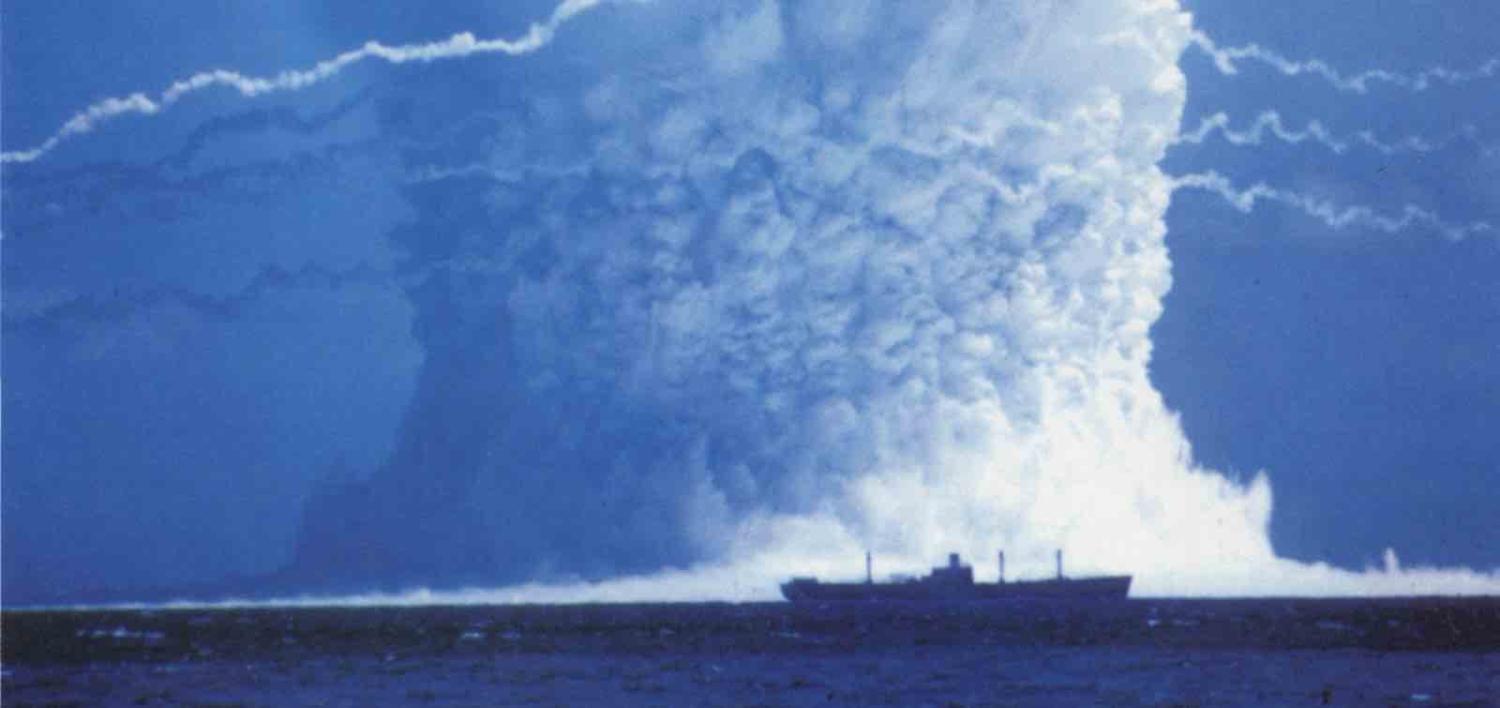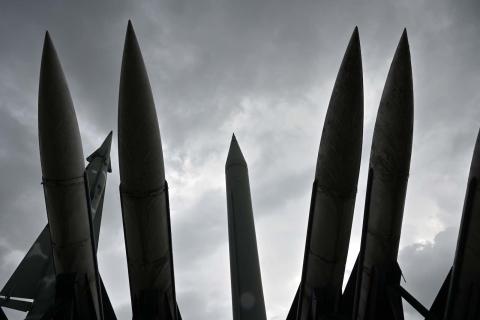Asia urgently needs new diplomatic initiatives aimed at reducing nuclear dangers and preventing arms racing in the region. There’s a glaring gap between the ambitious disarmament goals set out in the relevant global treaties – the Treaty on the Non-Proliferation of Nuclear Weapons (NPT), and the new Treaty on the Prohibition of Nuclear Weapons (TPNW) – and the immediate need to constrain regional arms racing pressures, which are undeniably growing.
The pending abrogation of the INF Treaty for nuclear and conventional ground-launched intermediate-range missiles, which is a symptom of major strategic change, including developments in and proliferation of military technologies, should be a wake-up call for us all: the post-Cold War arms control architecture is crumbling, and if it can’t be salvaged and adapted, something new needs to take its place.
If we don’t heed this call, we’re likely to see a major arms race in Asia, with all the negative consequences that that entails, including setting non-proliferation and disarmament projects back indefinitely.
Despite these dangers, arms control leadership has been distinctly lacking in Asia, as demonstrated by the noticeably quiet response to the INF treaty’s demise (in stark contrast to loud European reactions). This is partly explained by the fact that strategic communities in Asia have been preoccupied with nuclear and missile developments in states that haven’t been constrained by the INF treaty: China, India, Iran, North Korea, Pakistan, and Saudi Arabia – all of which have been free to test and deploy dual-capable missiles that are banned under the Treaty.
How to curtail these expanding arsenals in a region where the most powerful actor, China, is openly sceptical of arms control is an extremely difficult challenge, but one that must be addressed.
How to curtail these expanding arsenals in a region where the most powerful actor, China, is openly sceptical of arms control is an extremely difficult challenge, but one that must be addressed. The failure of Asia’s leaders to face this problem head on, and to witness the trampling of the INF treaty with barely even a whimper, is an abdication of responsibility and a worrying indictment of their leadership.
There are some immediate and practical steps that Asia’s leaders, including Australia, can take to start dealing with this problem. For example, it would show strong leadership if US allies in Asia signalled, collectively, that a return to hosting land-based US nuclear weapons in Asia, which ended in the early 1990s, is not an option. It needs to be made clear that not only would new hosting arrangements undermine the NPT, which is the most strategically important treaty the world has ever known, but it would dramatically increase incentives for China to abandon its no first use posture and accelerate its military expansion – developments no-one would want to see.
One way to communicate strong anti-hosting sentiment would be for US allies in Asia to issue a joint statement following formal confirmation of Washington’s INF withdrawal (which has yet to occur), calling for dialogue on an updated, multilateral version of the INF treaty that would ensure that in Asia at least, Cold War nuclear hosting arrangements remain a thing of the past.
Asian leaders can also pursue a common strategy of diplomatic persuasion to encourage the extension of the New Strategic Arms Reduction Treaty (New START), designed to verifiably reduce US and Russian strategic nuclear arsenals. The momentum this generates should be used to promote serious discussion of a multilateral strategic arms control treaty. Failure to extend New START in 2021 (which is possible if Trump wins a second term and National Security Adviser John Bolton stays on the scene) would have massive knock-on effects in Asia, creating a newly permissive environment for vertical and horizontal nuclear proliferation.
New START extension is therefore an essential building block for Asian arms control and strategic stability in general, and it should be possible to build support across the region – not only among US allies – for a diplomatic initiative that uses New START as its engine.
Getting Asia’s nuclear-armed states on board with new arms control initiatives won’t be easy, but one way to facilitate this is by stepping up defence diplomacy in Asia, via formal and informal discussions that focus on building trust and improving transparency and predictability.
Australia and Japan are already attempting to improve nuclear transparency in the NPT context through the Nuclear Non-Proliferation and Disarmament initiative. But it makes sense to also increase efforts to engage the NPT outliers and China in frank discussions in regional forums, and with dedicated bilateral and informal initiatives that include advanced conventional weapons and new technologies on the agenda.
These efforts would be timely, appropriate, and achievable, and would reduce dangerous arms racing dynamics in Asia by demonstrating a serious commitment to peace and stability. But the political will to pursue them in earnest needs to flow from a series of common understandings. This includes understanding the dangers of allowing military build-up to continue, unconstrained. It goes further, to acknowledging the capacity for human agency to control arms racing dynamics by non-violent means that can be adapted in response to change. And this must also be founded on the shared benefits of building an arms control architecture that is relevant for today, which retains important elements of existing arms control arrangements, but which also embeds Asian countries, advanced conventional weapons and new technologies into the structure.
All of this is possible, and it’s time for Asia’s leaders to step up and make it happen.

